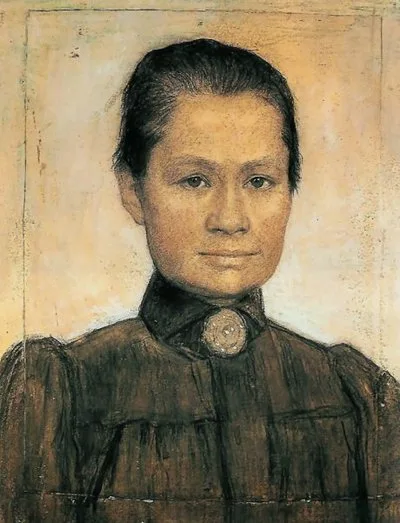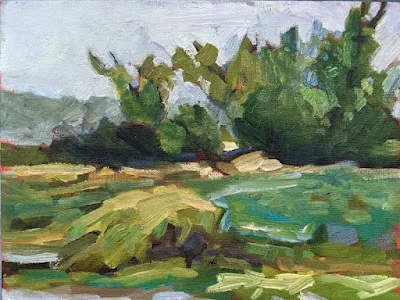Behind every successful man is a woman, they say. She’s not always his wife.
 |
| Portrait of Johanna Bonger, 1905, Johan Cohen Gosschalk |
Johanna Gezina Bonger is an unknown name to most of us. She was described by those who knew her as ‘cheerful and lively’ and ‘smart and tender’, and her remaining portraits depict a woman of grace and intelligence. For her times, that would have been enough, but she also changed the course of art history.
Johanna was born in 1862 in Amsterdam to a large middle-class family. Unusually for the time, she pursued higher education, including a stint at the British Museum library. She became an English teacher, which is where her story would have ended had she not met one Theo van Gogh. She rejected his first proposal, an indication that she was a woman who knew her own value. A year later, she said yes.
.jpg) |
| Portrait of Theo van Gogh, 1887, Vincent van Gogh, courtesy Van Gogh Museum |
Theirs was a sadly short marriage, lasting less than two years before Theo died of what was recorded as dementia paralytica, a symptom of syphilis. Theo certainly didn’t transmit it to his wife, who lived a long and productive life. The couple had one son, named Vincent after his uncle.
Theo’s death left Johanna and her infant child relatively impoverished. Their assets were their Paris apartment and around two hundred paintings by her late brother-in-law, Vincent van Gogh.
Van Gogh’s legacy as a painter was not yet established. The critic Albert Aurier, who was his greatest champion, died suddenly of typhoid in 1892. Van Gogh’s former friend, artist Paul Gauguin, was disinclined to help the young widow market his late competitor’s work. Although today we think of van Gogh as the primary figure in Post-Impressionism, at the time he was on the fringes of acceptability. Most art experts thought his pictures were worthless, and told her so.
.jpg) |
| Johanna van Gogh-Bonger with son Vincent Willem, 1890, Raoul Saisset, Paris |
Thankfully, Johanna ignored them. She moved back to the Netherlands, opened a boarding house, and began to tirelessly promote Vincent’s work. For extra income, she translated short stories from French and English. Meanwhile, she raised a toddler.
“Mrs Van Gogh is a charming little woman,” wrote the now-forgotten painter Richard Roland Holst, “but it irritates me when someone gushes fanatically on a subject she knows nothing about, and although blinded by sentimentality still thinks she is adopting a strictly critical attitude. It is schoolgirlish twaddle, nothing more. The work that Mrs Van Gogh would like best is the one that was the most bombastic and sentimental, the one that made her shed the most tears; she forgets that her sorrow is turning Vincent into a god.”
Her son Vincent was 11 when Johanna married painter and art critic Johan Cohen Gosschalk, who shared her appreciation for her late brother-in-law. He helped her organize an exhibition of van Gogh’s paintings at the then-new museum of modern art in Amsterdam, the Stedelijk. Johan died after a decade of marriage, and Johanna then organized a retrospective of his works.
 |
| Before her own death, Johanna arranged for her late husband to be exhumed and reburied in France with his brother so that the inseparable pair could lie together in eternity. Photo courtesy Yannbee Dutch Wikipedia. |
Through her second widowhood, Johanna continued to tirelessly promote Vincent. She arranged showings of his works and translated and published the brothers’ correspondence. The Letters of Vincent van Gogh established his reputation as a suffering genius. By saving and selectively showing his works, over and over, Johanna created the modern myth of Vincent van Gogh, which in turn influenced 20th century art in incalculable ways.
Johanna lived to age 62, working on the van Gogh letters right to the end. But as important as her art legacy is, her personal legacy is also arresting. Her grandson Theo was executed as a resistance fighter during the Nazi occupation of the Netherlands. Her great-grandson, also called Theo van Gogh, was a filmmaker who was murdered by an extremist for making a movie with Ayaan Hirsi Ali that criticized the treatment of women in Islam. Courage and vision run in that family.






